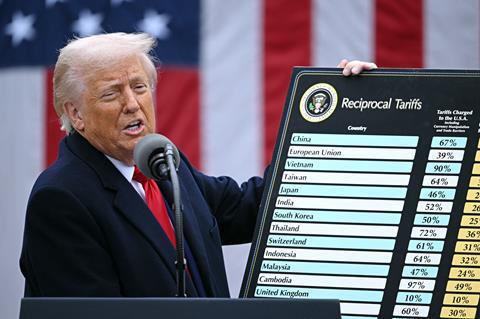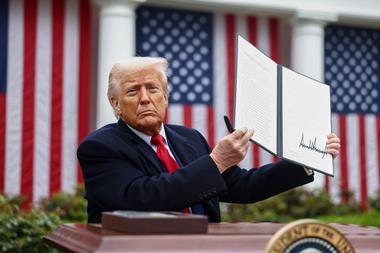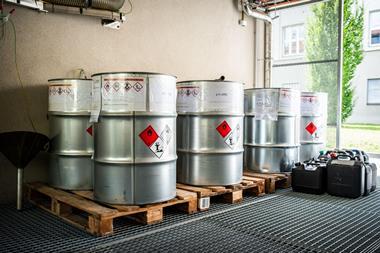Piling cost and complexity to stretched global supply chains will hit industries hard

The broad and variable trade tariffs introduced by US president Donald Trump are set to play havoc with complex chemical supply chains, with ripple effects proliferating across vast swathes of the manufacturing industry.
Trump’s sledgehammer policy slaps a minimum 10% tariff on all imports to the US – even from countries like the UK with which the US enjoys trade parity or a trade surplus. Partners with which the US runs a trade deficit – importing more than it exports – face higher ‘reciprocal’ tariffs, including: 20% for the EU (with higher rates on certain sectors, including cars), 26% for India and 34% for China (or 54% including the already-imposed blanket 20% tariff on Chinese goods).
Pharmaceuticals and semiconductors are among a handful of goods that are so far exempted from the additional ‘reciprocal’ tariff element, meaning they will attract the 10% base rate duty. That will be small consolation for the pharmaceutical industry , which relies heavily on cheap medicines and ingredients manufactured in India and China – particularly if Trump follows through with his threat of sector-specific future tariffs. Some of the bigger companies may be able to partially reconfigure their existing manufacturing networks to increase domestic manufacturing and lessen the impact of the tariffs. But overall, the likely effect is that drugs – particularly generics from India or China – will either get significantly more expensive, or possibly be withdrawn from the US entirely if tariffs wipe out already thin profit margins.
In the chemicals industry, where complex global supply chains mean that final products can include constituents originating from many different countries and make multiple border crossings during production, the effects will be widespread and almost impossible to mitigate. Rules of Origin provisions, which mean producers must account for the ‘economic nationality’ of their products based on where all the inputs came from (and apply associated tariffs on a proportional basis), will see tariff costs percolating throughout value chains, with potentially unexpected consequences.
Trump’s stated aim is to pressure trading partners into reducing their own tariffs on US goods, or lowering non-tariff barriers to trade (such as quotas and limits, or complex regulations and administrative requirements). In that sense, it’s possible that they could be lifted if Trump and his team deem countries have made sufficient efforts to align their trade policies. But given that the calculations appear to be based on overall trade deficits, rather than specific assessments of tariffs and barriers, there is little clarity on what that might involve.
Response and retaliations to the tariffs have varied in their ferocity, although it’s clear that very few countries are inclined to roll over and accept Trump’s bullying shock tactics without resistance. But while the politicians stare each other down, waiting to see who will blink first, manufacturers, importers – and ultimately consumers – will be counting the cost.

















No comments yet